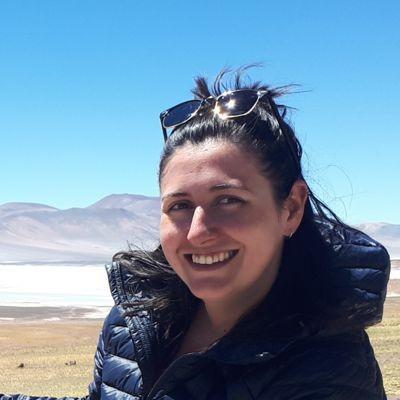
Dr. Marion Peral
Biography
Marion was a senior post-doc with AMGC for several years supported by FWO working on project DOMINO ", she has now a permanent CNRS position at the Université de Bordeaux, France.
PROJECT:
DOMINO: Drivers Of Mid-pleIstoceNe glaciatiOn? Novel multi-proxy approach to track oceanicatmospheric-cryospheric controls on climate responses
RESEARCH SUMMARY:
My goal is to develop the application of the clumped isotope to a Nu-Perspective-IS-IRMS, combined with a Nu-carb in the AMGC group. I will apply this method to different types of carbonates such as foraminifera, speleothems, bivalves... in order to obtain the accurate past temperatures and better understand the paleoclimatic evolution of key ancient climatic periods
My research focuses on paleoclimatic reconstructions combining elemental and isotopic geochemical proxies. I am interested in methodological development such as testing proxy limitations by comparison of different paleothemometers. My paleo-applications combine multiproxy approaches to reconstruct temperatures, ice-sheet cover and atmospheric CO2 concentration. For now, my research is mainly focused on paleoclimatic evolution over the last 10 Ma, with a particular interest in important climate changes such as the Mid Pleistocene Transition.
FIELD SITES:
I study marine sediments cores from the North Atlantic, Indian and Arctic Oceans. I also work on speleothems and marine sediments from Mediterranean Sea, specially from Italy.
EDUCATION:
- PhD in Geosciences | 2018; University of Paris-Saclay, LSCE / CEA, France
- MSc in Sedimentary Environment | 2015; University of Paris-Saclay, France
- MSc in Oceanography | 2014; University of Bordeaux, France / ERASMUS exchanges: University of Bergen (Norway), UNIS (Svalbard, Norway), University of Saint Andrews (Scotland)
- BSc in Geosciences and Environment | 2012; University of Bordeaux, France
KEYWORDS:
Carbonate Clumped Isotope, Trace Elements, Stable Isotope, Thermometers, Paleoclimatology, Paleoceanography, Ocean - Atmosphere - Crysphere - Tectonic Interactions, Foraminifera, Speleothems, Cenozoic.
